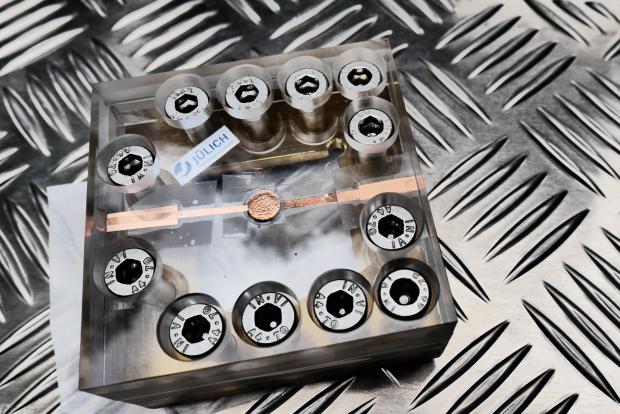
Breaking News
 Washington's Dept of Health just quietly issued a Covid vaccine standing order...
Washington's Dept of Health just quietly issued a Covid vaccine standing order...
 The day after his fiery Senate hearing, RFK Jr. revealed the exact reasons for firing CDC Director
The day after his fiery Senate hearing, RFK Jr. revealed the exact reasons for firing CDC Director
 47 shares a video about vaccines to Truth. Caption: "They're all poison."
47 shares a video about vaccines to Truth. Caption: "They're all poison."
 Stephen Goodson (1948-2018) served as director of the South African Reserve Bank from 2003 to 2012
Stephen Goodson (1948-2018) served as director of the South African Reserve Bank from 2003 to 2012
Top Tech News
 Methylene chloride (CH2Cl?) and acetone (C?H?O) create a powerful paint remover...
Methylene chloride (CH2Cl?) and acetone (C?H?O) create a powerful paint remover...
 Engineer Builds His Own X-Ray After Hospital Charges Him $69K
Engineer Builds His Own X-Ray After Hospital Charges Him $69K
 Researchers create 2D nanomaterials with up to nine metals for extreme conditions
Researchers create 2D nanomaterials with up to nine metals for extreme conditions
 The Evolution of Electric Motors: From Bulky to Lightweight, Efficient Powerhouses
The Evolution of Electric Motors: From Bulky to Lightweight, Efficient Powerhouses
 3D-Printing 'Glue Gun' Can Repair Bone Fractures During Surgery Filling-in the Gaps Around..
3D-Printing 'Glue Gun' Can Repair Bone Fractures During Surgery Filling-in the Gaps Around..
 Kevlar-like EV battery material dissolves after use to recycle itself
Kevlar-like EV battery material dissolves after use to recycle itself
 Laser connects plane and satellite in breakthrough air-to-space link
Laser connects plane and satellite in breakthrough air-to-space link
 Lucid Motors' World-Leading Electric Powertrain Breakdown with Emad Dlala and Eric Bach
Lucid Motors' World-Leading Electric Powertrain Breakdown with Emad Dlala and Eric Bach
 Murder, UFOs & Antigravity Tech -- What's Really Happening at Huntsville, Alabama's Space Po
Murder, UFOs & Antigravity Tech -- What's Really Happening at Huntsville, Alabama's Space Po
Researchers Reveal New Faster-Charging Solid-State Batteries

In the marketplace of battery development ideas, there are winners and losers. When it comes to the solid-state variety of research, we've seen lots of promising advances and expect some of these will lead to winners. And then there are announcements which make us furrow our brows and wonder if there something we're missing when a report doesn't seem to offer much in the way of technological advancement. This is one of those latter situations.
The headline sounds promising — Jülich researchers developing fast-charging solid-state batteries — but the devil is in the numerical details, even if some interesting points are raised. But maybe we're getting ahead of ourselves. Let's take a look at the "who" and "what."
Researchers from the Jülich Institute for Energy and Climate Research published a paper in the journal Applied Materials and Interfaces which claims a 10-times greater charge rate in a new solid-state cell. Unfortunately, the baseline for the charging rate is low: 10 to 12 hours. This means the big increase in speed only gets the cell to a charging time of an hour. That's a rate of 3 C, something that many, if not most batteries in use today are capable of.

 Tiny briefcase engine boosts EV range beyond battery power
Tiny briefcase engine boosts EV range beyond battery power 

